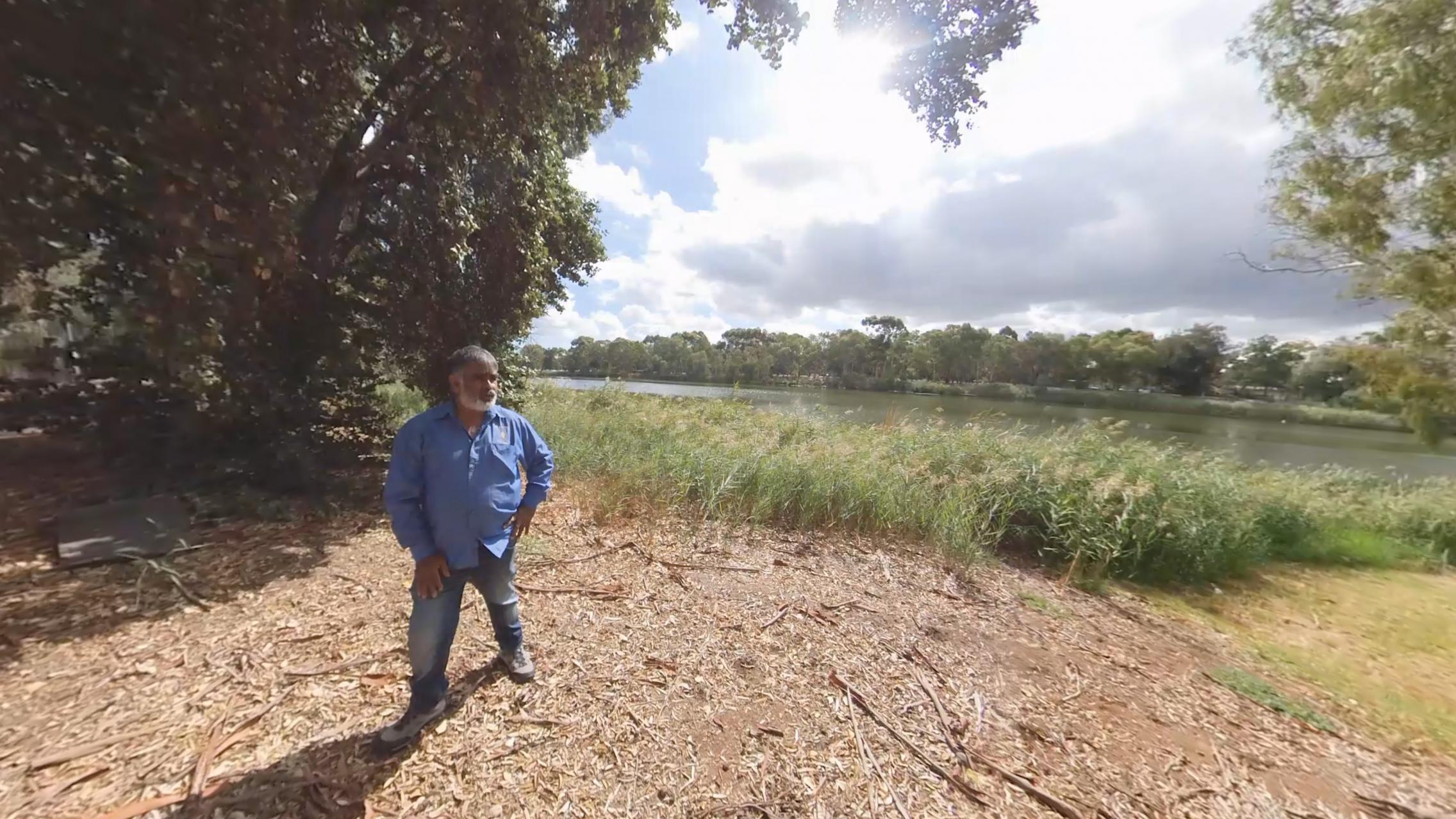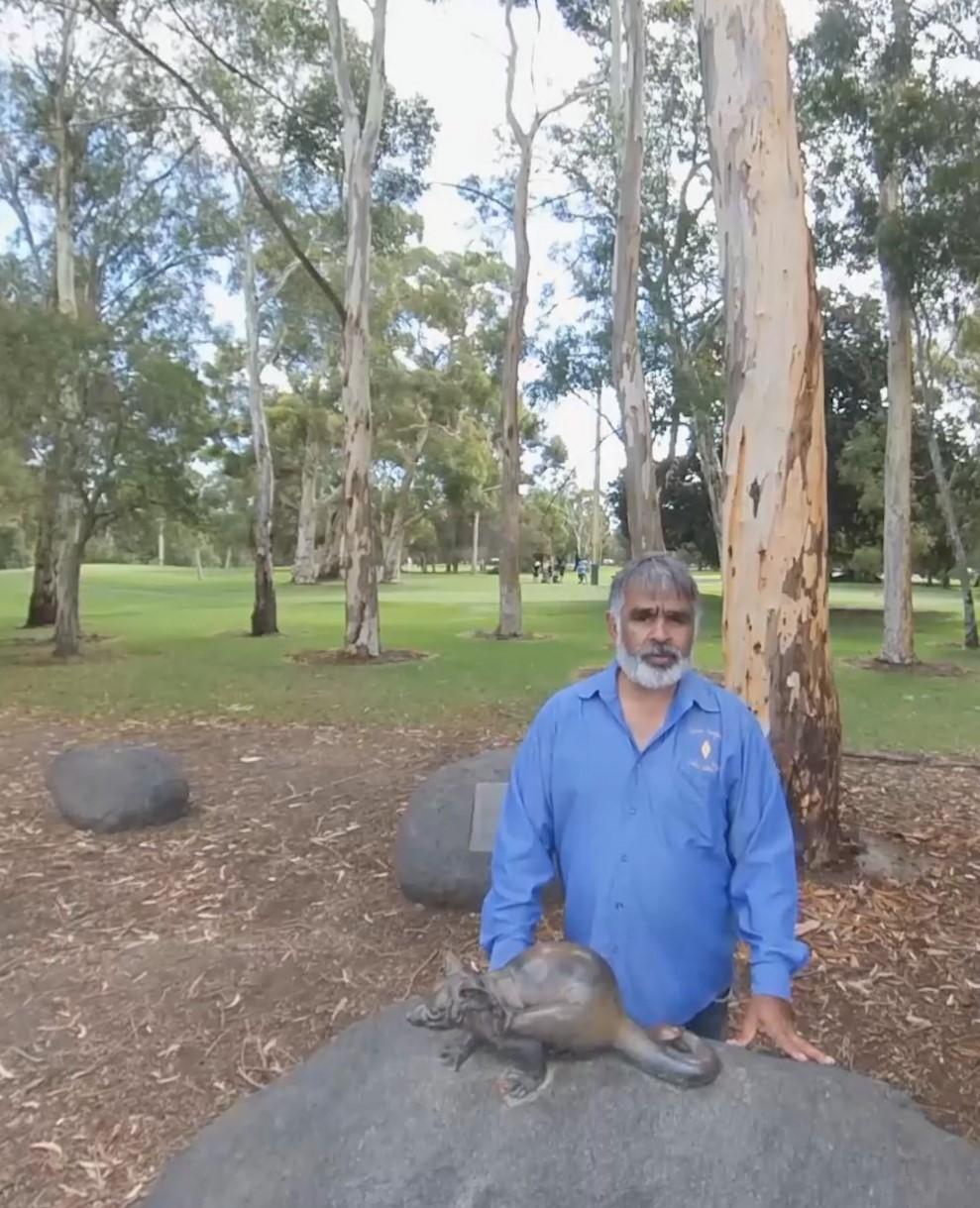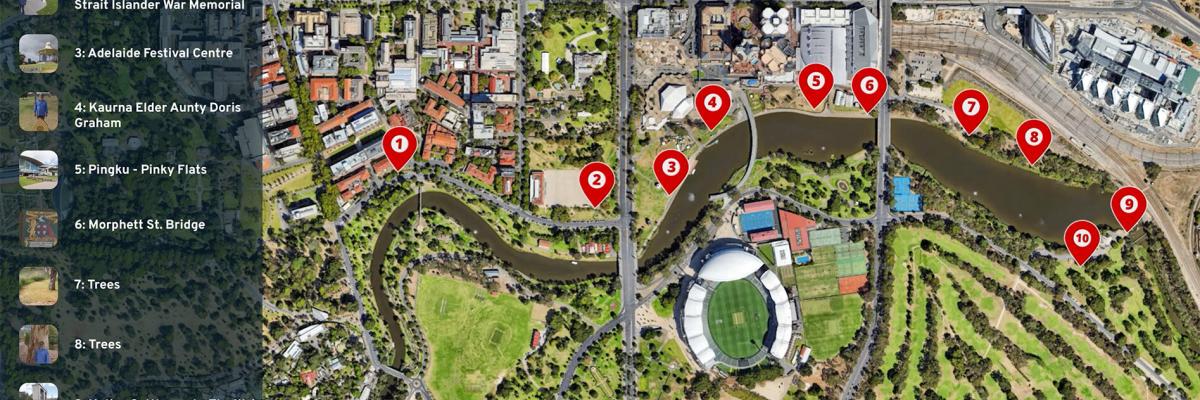Learning on country through VR

In 2020, remote students in the Indigenous People, Country and Protocols course could have missed out on a valuable experience: learning on country.
‘Visiting the River Torrens cultural trail helps students achieve a key learning outcome of the course’, explains Dr Kam Kaur, Course Coordinator, Lecturer, and Researcher with Wirltu Yarlu Aboriginal Education. ‘Being in the physical location as Indigenous elders talk about the importance of country is a powerful learning experience and in 2020, remote students were going to miss this’.
As Dr Kaur was already working on an LEI grant project with postgraduate student and Cultural Advisor, Rosemary Wanganeen, Learning Designer, John Murphy and the LEI film crew to create a 360-degree video of storytelling on APY Lands, they investigated how this technology could provide a solution for remote students. ‘Initially, I planned to make a basic video recording’ she says, ‘but this would not provide an equivalent experience for students accessing the tour online as it was too static’.
For a more authentic sense of place, Dr Kaur decided to use a 360-degree camera to create a virtual tour that allowed students to feel as though they were there accessing the panoramic view. They used an evidence based design approach to align Indigenous pedagogy with the literature on virtual learning environments (Mayes and Fowler 2014) (Dalgarno & Lee 2010) and linked this to course learning outcomes (Biggs and Collins 1982).
Working with Indigenous elders, Uncles Rodney O’Brien, Frank Wanganeen and Fred Agius and the LEI team, John Murphy, Dave Johnston, James Donovan and Aaron Shannon-Honson, filming and production took about 8 weeks. Dave Johnston and James Donovan captured the content in the field and utilised Google Earth to generate the animations. The video, animation, and 360 footage were matched to music and historical images which were then handed over to Aaron Shannon-Honson in the Media Production team to develop an immersive interactive experience ready for students.

Uncle Frank Wanganeen
Students can access the virtual tour in the MyUni course and are provided with reflection prompts as they interact with the video. ‘Students who experienced the tour online told me it was almost like being there’, shares Dr Kaur, ‘While listening to the explanation of place from the Indigenous elder, they could move their view around the location to get a sense of the sounds and sights, as if they were actually on country’.
This is not a short-term technological fix, however. Dr Kaur intends to keep using the virtual tour in the course as it provides flexibility for students who cannot be physically present at future tours. Also, on-campus students reported that it is useful to have access to the virtual tour even if they take part in the tour on location. According to Dr Kaur, ‘The virtual version of the tour can be used to review aspects of the cultural trail which helps students reflect on the experience and what they learnt from it when working on their course assessment’.
Dr Kaur and the LEI team will continue to build on this experience when they start filming on the APY Lands later this year to complete the LEI grant project. As Dr Kaur explains, using VR technology to create an interactive video provides insight into Indigenous culture and knowledge that would usually be inaccessible.
LEI Learning Designers provide a range of learning and teaching support which can be booked using this website.
To read more about the support provided by the Media Production team access their page on the website.
Dr Kaur and John Murphy will present this project at the Festival of Learning and Teaching in July.
https://www.adelaide.edu.au/learning/news-and-events/festival-of-learning-and-teaching

